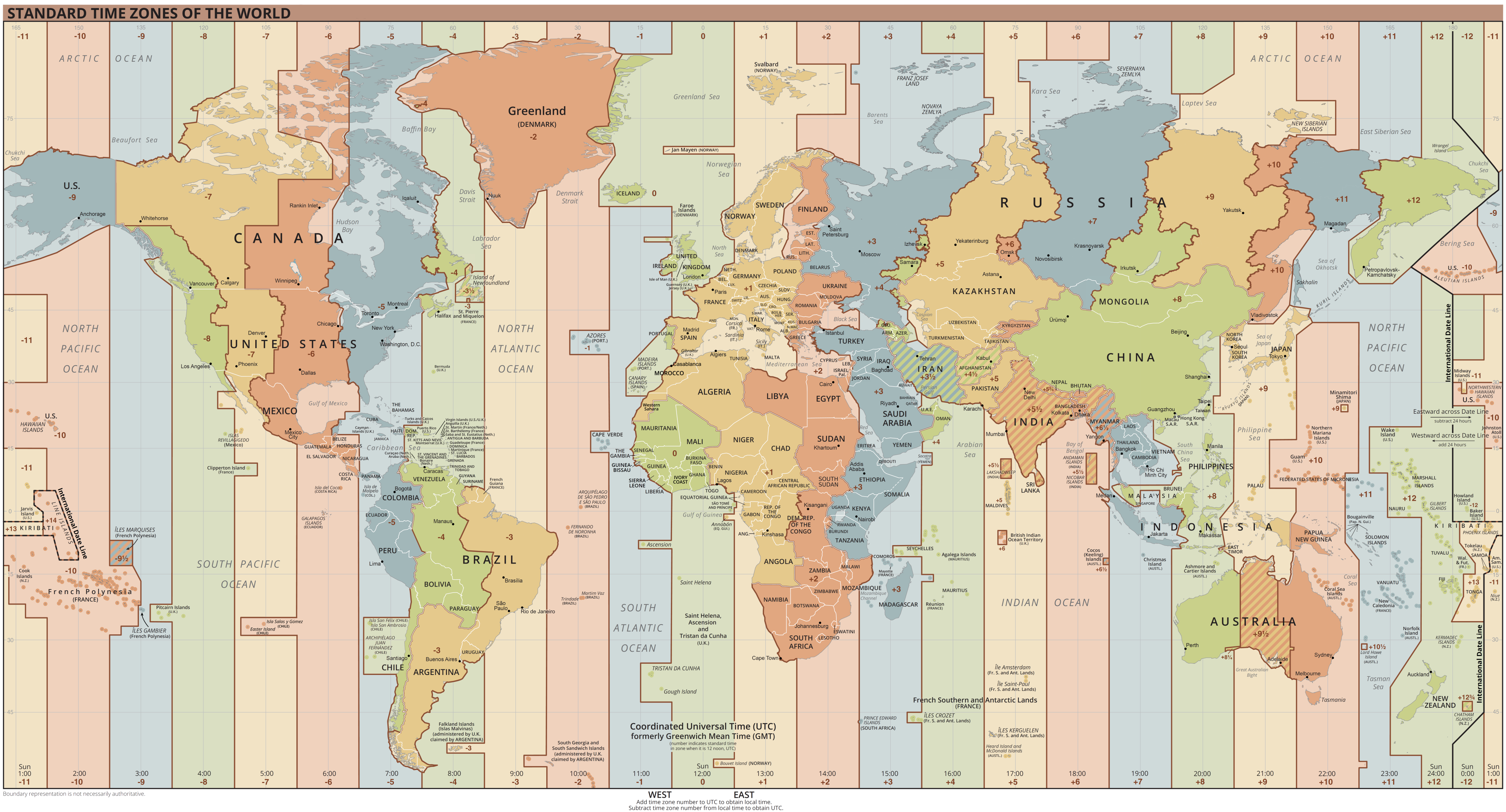 China is the world’s 3rd largest country. It spans 3.7 million square miles (9.6m sq. km) and 3,230 miles (5,200 km) east-to-west. and still, since the Chinese Civil War, this entire region (plus Tibet) uses one uniform hour — UTC +8.
China is the world’s 3rd largest country. It spans 3.7 million square miles (9.6m sq. km) and 3,230 miles (5,200 km) east-to-west. and still, since the Chinese Civil War, this entire region (plus Tibet) uses one uniform hour — UTC +8.
To compare: the contiguous United States is, on average, 3,000 miles (4,800 km) across, and it spans 4 different time zones2 – East, Central, Mountain, and West, UTC -5 to UTC -8 accordingly.
China’s landmass, on the other hand, occupies 5 different standard time zones – from UTC +5 to UTC +9, and it’s not a mere happenstance that China’s capitol, Beijing, is located on UTC +8 as well. Such uniformity of time on such a large scale can pose certain challenges to the population — sunrises at 3am or at 10am, standard working hours, and standard opening hours for governmental services, such as the post service.
In theory, when you look at Earth’s longitudes, each time zone should be 15 degrees, and the time within this zone should be its average time. For example, UTC+0 is crossed by longitude 0 and spans 7.5 degrees to its east and west, and that is why GMT is so named — Greenwich Mean Time. But since time zones are a human invention, the final word on time zone assignments is a local, political issue, that can create some mismatches: Argentina and Bolivia are on the same longitude, but they don’t share time zones. Bolivia is at UTC -4, while Argentina chose to be more like its large neighbor, Brazil, and stayed at UTC -3, even though technically it occupies UTC -4 and UTC -5); In the US, most of Indiana is on Standard Eastern Time, but some counties in its south is on Central Time; Some countries have set their time to fractions – India, for example, is at UTC +5:30 and Australia’s Central Standard Time is UTC +9:30. There are also a few that apparently 1/2 an hour was too clean for their taste, and skewed the clock even further — Nepal, for example, is at UTC +5:45.
——
1 UTC is a compromise between the French Temps Universel Coordonné and the English Coordinated Universal Time. In the past, people used Greenwich Mean Time (GMT) as a point of reference to the rest of the world, but since the introduction of the atomic clock, it turned out that GMT is not accurate enough on the sub-second level. These days GMT is still used casually, but UTC is technically preferable.
2 If we want to nitpick (and why wouldn’t we?), Wikipedia states that by law, the US recognizes 9 time zones for official purposes (such as dealings with the governments etc.) – the four that were already mentioned, two for beyond the contiguous United States – Alaska at UTC -9 and Hawaii at UTC -10, plus 3 more for the Unincorporated territories of the United States – Atlantic Time, UTC-4 for Puerto-Rico and the US Virgin Islands, Samoa Time, UTC -11, for American Samoa, and Chamorro Standard Time, UTC +10, for Guam and the Northern Mariana Islands.
3 Although officially, the Chinese government only recognizes one time zone, China’s westernmost province, Xinjiang, uses its own time zone.
For further read:
- Wikipedia on time in China
- Wikipedia on Universal Time
- Wikipedia on Time Zones
Please vote:
